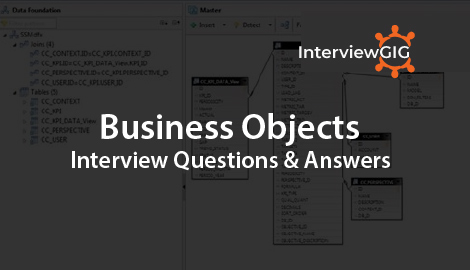What is SAP Testing?
SAP Testing is about testing the functionality of these modules and to ensure that they perform as per the configuration. A SAP system undergoes varied changes like patch management and fixes, new module implementations, and varied alternative configuration changes. Of these modifications raise a desire for Regression testing that’s to be performed in SAP environments. SAP testing automation tools like SAP test Acceleration and optimisation tools are often used for this purpose.
What is the Business Process Testing?
Business Process Testing (BPT) is a role based testing method, which facilitates the testers and Subject Matter Experts (SME) to work mutually. The emphasis of BPT isn’t on checking any specific vertical. Rather, it puts your entire system to test from finding hot leads and driving them down the sales funnel to streamlining service delivery and readying, at the side of economical vender management, revenue management and drawback resolution strategies. Such comprehensive end-to-end testing focuses on key business parameters. With it, you’ll check the readiness of your product and processes from the business aspect whereas additionally experiencing it from the customer’s perspective.
What are the types of SAP testing?
- SAP User Acceptance Testing
- SAP Load Testing
- Integration Testing
- Unit Testing
- System Testing
- Scenario-based Testing
- SAP Interface Testing
- SAP Security and Authorizations Testing
- SAP Cutover Testing
- SAP Regression Testing
- SAP System Performance Testing
What are the best Automation SAP Testing Tools?
Automation testing is used to test the application from load, performance, and stress purpose. This testing is used to increase the coverage of test. It improves the accuracy and saves time and money in comparison to manual testing.
Some SAP Testing Tools are:
- SAP Quality Center
- HP Quick Test Professional (QTP) UFT
- IBM Rational Performance tester
- eCATT
- SAP TAO
- TestComplete
- WinRunner
- Tricentis Tosca
- Selenium
- JMeter
- Open STA
- Load runner
- WATIR
- Infosys SAP Test Automation Accelerator
What are the challenges faced during SAP Testing?
During SAP Testing challenges faced are
- All the critical interfaces should be determined, and their connectivity should be established with corresponding test systems
- To recognize the business processes which are suitable for test automation
- Valid combination of test data required for testing
- Identify negative testing conditions
- Mention how the system design traces back to all captured requirements and the number of test cases
- Identify Regression scenarios/test cases and build Regression test suite that requires during each release
- Managing output and input data to complete the scenarios OTC, P2P, etc.
- Design robust Automation Framework that should be maintainable and scalable
What is Manual Testing?
Manual testing suggests that you’re testing a code manually while not mistreatment any automated tools or any script. During this form of testing, the tester takes over the role of an end-user and tests the software to identify bugs or any sudden behavior. There are totally different stages of a manual testing. They are − unit testing, integration testing, system testing, and user acceptance testing. Manual test case execution is very tedious and time consuming.
What is Automated Testing?
Automation testing is a type of testing during which automated test suit execution is performed victimisation totally different automation tools. Automated test suit execution is extremely quick, solely the initial test framework and test script creation takes time.
Can you define unit testing?
Unit testing is a type of testing to check if the small piece of code is doing what it is supposed to do. It is focus on the testing the functionality of individual units only and does not uncover the issues arises when different modules are interacting with each other.
Can you define Performance testing?
Performance testing is used to test for determining the time taken to perform the actions. It helps to determine the system to meet and fulfill the service level agreement.
Can you define Integration testing?
After all sap modules are implemented, Integration testing is used to test whether all the posting are working properly that cuts across SAP modules, for e.g. order to cash, procure to pay (p2p) and so on. The purpose of this level of testing is to expose faults in the interaction between integrated units. Test drivers and test stubs are used to assist in Integration Testing.
Can you explain GUI testing?
GUI (Graphical User Interface) testing is that the method of guaranteeing correct functionality of the GUI for a given application and ensuring it conforms to its written specifications. Additionally to functionality, GUI testing evaluates style elements such as layout, colors, fonts, font sizes, labels, text boxes, text data formatting, captions, buttons, lists, icons, links and content. Interface testing processes are often either manual or automatic, and are typically performed by third -party corporations, instead of developers or end users. GUI testing also tends to test for certain program behaviors that users expect, like an hourglass when the program is
What is the use of sap TAO UI scanner?
UI scanner is used to create new screen components with existing components. It is a plugin for QTP tool. You should try to use inspect tab over UI scanner. The standard UI scanner works only with GUI front-end client. It can be use third-party UI scanner for capturing the screen components.
Can you explain eCATT?
eCATT means extended Computer Aided Test Tool (eCATT) which is built is testing tool to test SAP system. ECATT is used to execute and create functional tests for SAP. By using testing tool we can test the entire business process, and we can also use this tool with a third party testing tool. Execution of every test script ends with a log, which explains the results of the test script.
By using eCATT we can do following operations
- Test transactions, reports, and scenarios
- Test remote systems
- Call BAPIs and function modules
- Test updates (database, applications, GUI)
- Test the effect of changes to customizing settings
- Check authorizations (user profiles)
- Check system messages
What is Screen flow logic in SAP Testing?
Screen flow logic in SAP Testing is like an ABAP code. It is used to contain the processing blocks. It consists of procedural part of the screen and is created in screen painter. Screen painter is like an ABAP editor.
Have you used HP QTP? What is the use?
HP QTP is an automated functional testing tool that helps testers to perform automated regression testing in order to identify any gaps, errors/defects in contrary to the actual/desired results of the application under test.
Can you define HP ALM Tool?
A test management tool, is now popularly known as Application Life Cycle Management (ALM) tool, as it is no longer just a test management tool but it supports various phases of the software development life cycle.
What is STLC? Why do we use STLC?
STLC (Software Testing Life Cycle) consists of all the steps that are performed in a specific way to ensure that quality goals are met and each step has specific goals and deliverables. It is used to improve the quality of a software product and to make it capable to meet the business requirements to achieve certain goals.
What is the use of Process Flow Analyzer in SAP TAO?
Process Flow Analyzer is used to automatically find out the user interfaces used in transaction codes executed in the SAP system. It automatically creates the test components and uploads them to Quality Center. It is also used to identify the sequence of test components as per user actions and creation of spreadsheet values.
What are the types of Work Process in SAP?
Dialog: Executes dialog programs (ABAP)
Update: Asynchronous database changes (is controlled by a COMMIT WORK statement in a dialog work process)
Background: Executes time-dependent or event-controlled background jobs
Enqueue: Executes locking operations (if SAP transactions have to synchronize themselves)
Spool: Print formatting (to printer, file or database)
Message: Responsible of Routing the Messages between the Application Servers)
Gateway: Responsible of Message Transfer between SAP Systems
Can you explain Bug life cycle?
It has the following life cycle such as:
New: When the bug is posted for the first time is called new.
Open: After the tester sends the bug, the lead checks if it genuine then it is called as open.
Assign: After the lead checks, he assigns to the developer and that state is called assign.
Test: Before the developer releases the software with bug fixed, he changes the state of bug to “TEST”.
Fixed: When the developer resolved the bug the status is fixed.
Reopen: If the bug still exists even after the bug is fixed by the developer, the tester changes the status to reopen.
Closed: If the bug is no more the status is closed.
Can you define cutover testing or Dry Run Testing?
This testing is usually performed once in a project lifecycle. Here a complete execution is done of all the tasks concerned to extract data from inheritance systems. Then, to perform any reasonably data conversion, load the results into the SAP system and absolutely validate the results, as well as a user sign-off.
Explain how to create an effective SAP Test case?
- Determine SAP role required to execute the test case
- Identify the SAP transaction that needs to be executed for the test case
- Test data needs execution the action. Verify whether or not the information must be created or whether or not it’s used by another tester or whether or not the data is barred & can’t be changed.
- Is there any pre-requisites required
- Create negative as well as positive scenarios
- Create detailed Test Steps
- Test coverage should be robust
- Document defects in a timely manner as soon as they are discovered
Can you define Screen flow logic in SAP Testing?
Screen flow logic in SAP Testing is like an ABAP code. It is used to contain the processing blocks. It is the procedural part of a screen. It is created using an ABAP-like programming language in Screen Painter on the Flow Logic tab page. Screen painter is like an ABAP editor.
What is consolidation tab in SAP TAO?
In SAP TAO, Consolidate is thought as a method to combine SAP TAO parts with built-in components to make test situations as single transactional business components. It permits you to gather multiple test components into one test.
Can you explain TBOM?
A TBOM contains a list of all objects in an executable entity. These objects are, for example, elements of the user interface, module pools, function modules or tables. These objects area unit appointed to a TBOM enhancement. Once a TBOM is formed, the system creates a primary TBOM enhancement that contains all objects during this initial recording. You can add any number of enhancements to a TBOM and extend the list of relevant objects. TBOM enhancements may be generated dynamically, statically, or semi-dynamically.
How do you perform multiple test executions?
In Business Process Change Analyzer, to execute multiple tests, you can select a folder and add it to the run list. You can also select TBOM creation at the time of execution.
Note: If TBOM already exists at time of execution, it will only update the existing TBOM.
Can you explain the significance of ODS in BIW?
An ODS Object serves to store consolidated and debugged transaction data on a document level (atomic level). It describes a consolidated dataset from one or more InfoSources. This dataset can be analyzed with a BEx Query or InfoSet Query. The data of an ODS Object may be updated with a delta update into InfoCubes and/or alternative ODS Objects within the same system or across systems. In contrast to multi-dimensional data storage with InfoCubes, the data in ODS Objects is keep in clear, flat database tables.
Explain the difference between developer trace, System trace, and System log?
The difference between developer trace, System trace, and System log
Developer Trace: It contains technical information for use in the event of issues with your system. Using the entries in the developer traces requires sound knowledge of the host systems in which your SAP system is running
System Trace: This is used when you want to record the internal SAP system activities
System Log: You can use the log to highlight and rectify errors occurred in your system and its environment.
Explain the difference between usable, non-reusable and external reusable actions in QTP?
Reusable action: An action that can be called multiple times any test in which it resides and can also be used by any other tests.
Non-reusable action: an action that can be called only in that specific test in which it has been designed and can be called only once.
External Reusable action: It is a reusable action hold on in another test. External actions are read-only within the occupation test, however it is used regionally with the editable copy of the data} Table information for the external action.





